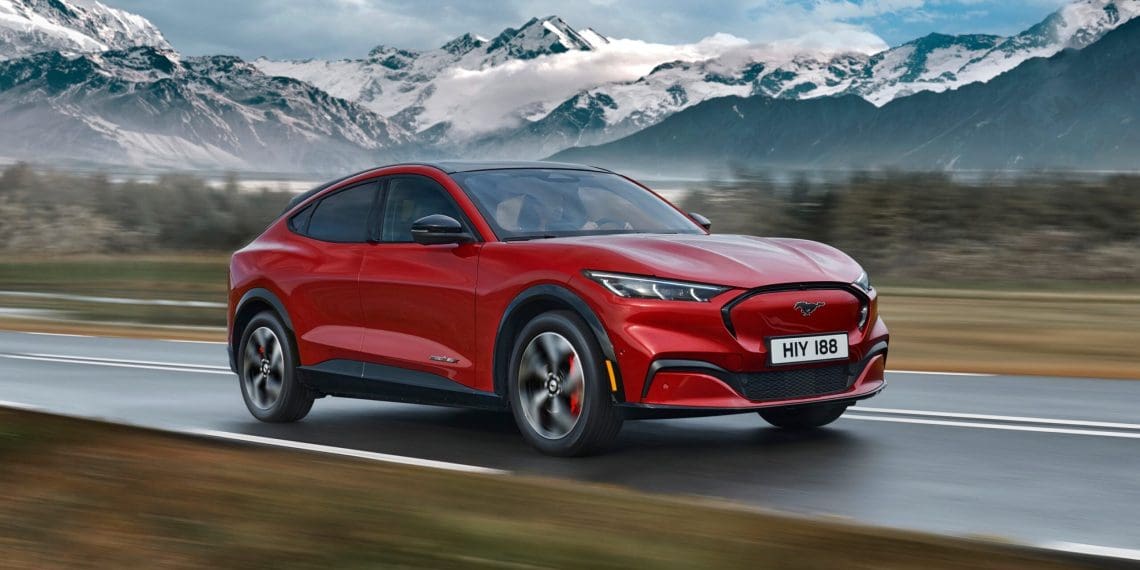The electric revolution isn’t turning out to be the gold rush automakers had hoped for—at least not for Ford. The Blue Oval’s ambitious Model e division continues to bleed cash at an alarming rate, with financial losses ballooning to $5.1 billion in 2024 and projections suggesting an even bigger hit in 2025, between $5 billion and $5.5 billion. Despite soaring EV sales, the harsh reality is clear: Ford’s electric vehicle business is still deep in the red, and the road ahead looks anything but smooth.
EVs Are Selling—But Still Losing Money
Ford’s electric vehicle sales in the U.S. jumped 34.8% in 2024, with 97,865 units delivered. Hybrid sales saw an even bigger surge, up 40.1% to 187,426 units. However, neither category came close to matching Ford’s gasoline-powered sales, which still dominate with nearly 1.8 million units sold last year—a figure that barely moved from 2023.
The numbers confirm what automakers have been grappling with: EVs are still too expensive to build, and consumers aren’t embracing them at the pace manufacturers expected. Ford CEO Jim Farley didn’t mince words, admitting that electric trucks and large SUVs have “unresolvable” issues due to their massive batteries, poor aerodynamics, and excessive weight. In his view, EVs simply aren’t a “good technology” for towing, further calling into question the long-term viability of all-electric pickups.
Major EV Delays and Cancellations: Ford Hits the Brakes
With Ford struggling to make EVs profitable, the company is slashing projects and delaying key models in an attempt to control costs. Among the casualties:
- The midsize electric pickup—originally slated for launch in 2026—has now been pushed back to late 2027, a delay of 18 months.
- The three-row electric SUV that was meant to challenge Tesla’s Model X? Canceled entirely in 2024 after Ford realized it couldn’t make the numbers work. The move cost the company $1.9 billion, a massive financial hit for a model that never even reached production.
John Lawler, Ford’s Chief Financial Officer, put it bluntly:
“We could not put together a vehicle that met our requirement of being profitable in the first 12 months of launch, and we’re sticking to that.”
The decision marks a major shift in Ford’s EV strategy, as the company abandons high-cost projects and pivots toward affordability and hybridization.
Ford’s New Plan: Cheaper EVs, Range-Extending Hybrids, and Multi-Purpose Platforms
With EV-only profits proving elusive, Ford is now turning to extended-range electric vehicles (EREVs)—a hybrid-like solution where a gasoline engine acts solely as a generator to charge the battery, but never directly powers the wheels.
This concept, already used in Mazda’s MX-30 R-EV and soon to debut in the 2026 Ram 1500 Ramcharger, could give Ford an edge by eliminating range anxiety while maintaining the benefits of an electric drivetrain. It’s a sign that the automaker is recalibrating—adapting to consumer hesitations instead of forcing an all-EV future.
Additionally, Ford is shifting towards multi-energy platforms—unibody and body-on-frame architectures that can support gasoline, hybrid, and electric powertrains alike. This strategy allows Ford to stay flexible in a volatile market, quickly adjusting production based on consumer demand rather than committing fully to EVs.
The Race Against Time: 2027 or Bust?
Ford’s long-term vision makes sense, but there’s a glaring issue: its next generation of cheaper EVs and EREVs won’t hit the market until 2027. That leaves a massive two-year gap where Ford must fight to stay competitive while bleeding billions.
The situation highlights the larger industry-wide struggle—while Tesla turned its first full-year profit in 2020, legacy automakers are still pouring money into electrification without seeing returns. Even General Motors, which just announced its EVs are finally turning a profit, had to endure years of financial pain to get there.
Can Ford Survive the EV War?
The road ahead is uncertain. On one hand, Ford’s willingness to adapt its strategy, delay unprofitable models, and embrace hybrid technology could save it from a financial disaster. On the other, the next two years will be brutal, with multi-billion-dollar losses and a market that isn’t fully embracing EVs at scale.
Ford is betting big that a flexible, cost-efficient approach will keep it afloat while rivals like Tesla and Chinese manufacturers flood the market with affordable EVs. But if the industry shifts too quickly, Ford risks falling behind in a rapidly evolving game.
For now, the message from the Blue Oval is clear: the all-EV future is no longer guaranteed. Hybrids, gas engines, and range-extending solutions are back in the mix. And if that’s what it takes to survive, Ford is willing to embrace it—losses be damned.












